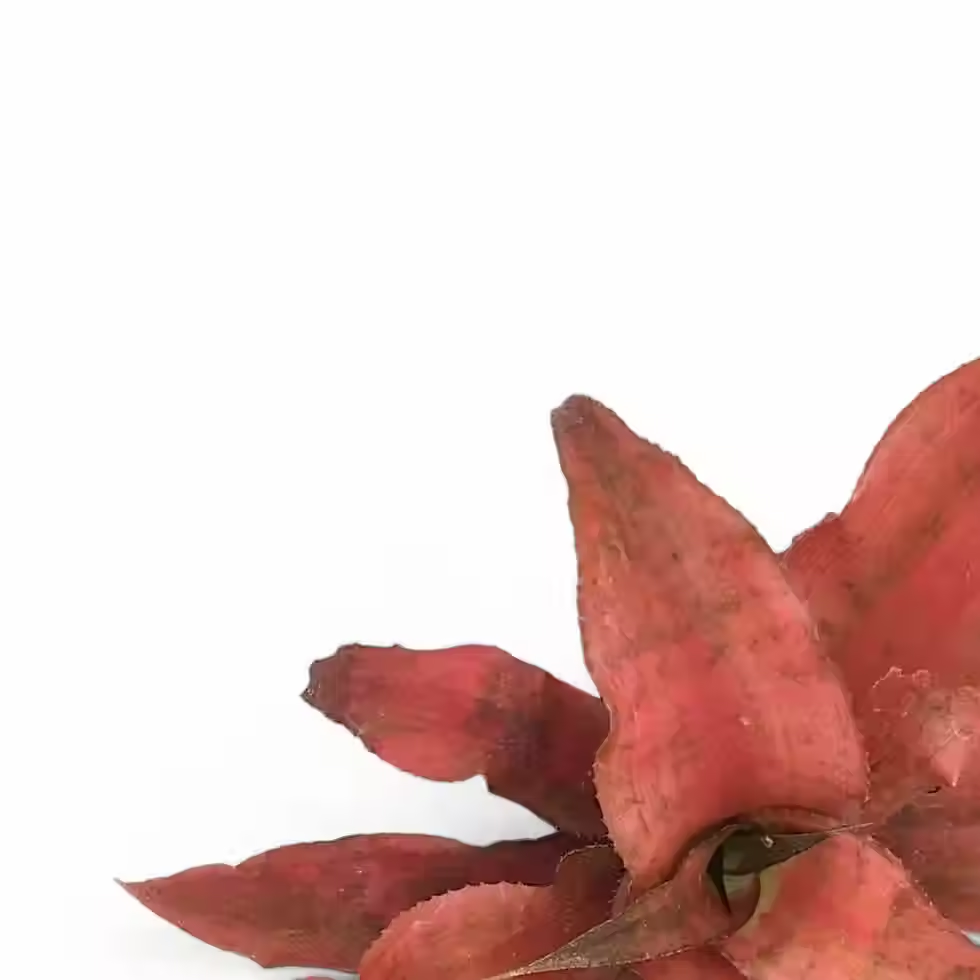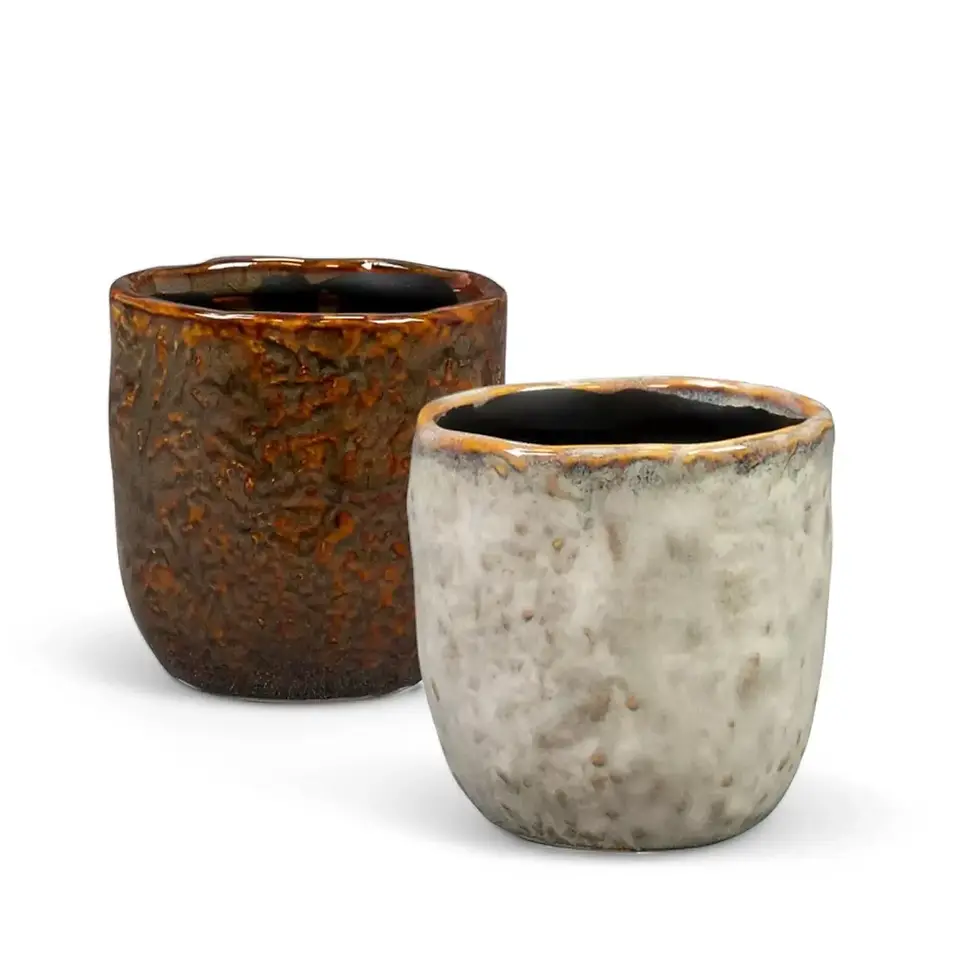Hoya compacta variegata - Stunning Foliage and Easy Care
Hoya compacta variegata, a captivating cultivar of the classic Hoya compacta, offers a stunning display with its intricate, rope-like vines and beautifully variegated foliage. This evergreen gem is celebrated for its thick, twisted leaves, adorned with creamy-yellow patterns that create an eye-catching contrast against deep green. Whether trailing elegantly or climbing with support, this plant is a visual delight.
Hoya compacta variegata doesn’t just impress with its foliage—its fragrant blooms add another layer of allure. These star-shaped flowers, featuring creamy white to pink petals and a glossy red center, form in spherical clusters. Their sweet scent fills the air, making every bloom a rewarding experience for patient growers. The flowers return to the same peduncles, so avoid removing these stems after blooming to encourage repeat performances.
What Makes Hoya compacta variegata Special?
- Distinctive Foliage: Twisted, rope-like vines with thick, glossy leaves variegated in yellow-cream and green.
- Compact Growth: A manageable size for indoor spaces, often displayed in hanging baskets or climbing structures.
- Fragrant Blooms: Sweet-smelling, star-shaped flowers in creamy-pink tones, blooming in clusters.
- Versatile Display: Can be grown as a trailing plant or trained to climb with supports.
Key Facts About Hoya compacta variegata
- Origin: Native to tropical Asia, sharing similarities with its close relative, Hoya carnosa. Its exact origins remain debated among botanists.
- Growth Habit: A slow-growing, evergreen climber or trailing plant with a potential length of up to 10 meters in ideal conditions.
- Natural Environment: Found in warm, humid tropical regions with consistent rainfall and temperatures averaging 18-30°C.
- Size Indoors: Typically reaches 1-3 meters when grown in homes.
- Growth Rate: Slow-growing but steady, with new growth emerging primarily during the warmer months.
- Toxicity: Slightly toxic to pets and humans if ingested. Keep out of reach of curious animals and children.
Best Practices for Growing Hoya compacta variegata
- Light: Prefers bright, indirect light. Avoid harsh midday sun, which can scorch leaves. Brighter light enhances variegation.
- Watering: Allow the topsoil to dry between waterings. Avoid overwatering to prevent root rot.
- Humidity: Thrives in household humidity but benefits from 40-60%. A humidifier can support healthy growth.
- Temperature: Ideal range is 15-25°C. Protect from temperatures below 10°C and sudden drafts.
- Soil: Use a well-draining mix like cactus soil with added perlite or pumice.
- Fertilizing: Apply diluted, balanced fertilizer once a year, or more frequently at half-strength for hydroponic setups.
- Repotting: Repot every 2-3 years, choosing a pot only slightly larger than the current one.
- Propagation: Easily propagated via stem cuttings placed in water or soil.
- Hydroponics: Adapts well to semi-hydroponic setups with inert growing media.
- Pruning: Prune sparingly to maintain shape. Avoid cutting flower peduncles.
- Placement: Position in a bright area with consistent light. Hanging baskets or shelves offer excellent display options.
How to Overcome Common Issues with Hoya compacta variegata
- Yellowing Leaves: Caused by overwatering. Adjust watering schedule and improve drainage.
- Brown Tips: A sign of inconsistent humidity or underwatering. Increase humidity or adjust watering.
- No Blooms: Insufficient light. Move to a spot with more indirect sunlight.
- Wrinkled Leaves: Indicates underwatering. Water thoroughly and monitor soil moisture.
- Pests: Look for mealybugs, spider mites, and scale. Treat with insecticidal soap , neem oil, or use beneficial insects.
- Root Rot: Prevent with well-draining soil and careful watering.
- Leaf Curling: May result from inconsistent watering or temperature stress.
- Fungal Issues: Improve air circulation and treat with a fungicide if needed.
Additional Tips for Thriving Growth of Hoya compacta variegata
Hoya compacta variegata thrives when its tropical origins are respected. Mimic its native environment with warm temperatures, indirect light, and consistent care. Regularly dust the leaves to ensure optimal photosynthesis and avoid frequent relocation, as it prefers stable conditions. The twisted leaves make thorough pest checks essential, as hidden areas can harbor insects. Patience is key when growing this plant—its slow growth is offset by its stunning, unique appearance.
Where Hoya compacta variegata Gets Its Name
The genus name Hoya honors 18th-century botanist Thomas Hoy, who dedicated his life to studying tropical plants. The specific epithet 'compacta' comes from Latin, meaning "compact" or "close-fitting," reflecting the plant's tightly twisted and clustered foliage.
Hoya compacta variegata - Frequently Asked Questions
- How often should I fertilize Hoya compacta variegata?
Fertilize once a year with a balanced, diluted fertilizer to promote healthy growth. Semi-hydroponic setups may require more frequent but weaker nutrient solutions.
- Can Hoya compacta variegata tolerate low light?
It can survive in low light but thrives and blooms best in bright, indirect sunlight. Low light may reduce variegation intensity.
- How do I encourage blooming?
Provide ample light, proper watering, and avoid cutting flower peduncles after blooming.
Bring Hoya compacta variegata Home Today!
Add this unique and captivating plant to your collection. Perfect for plant lovers seeking low-maintenance yet striking greenery.
Hoya compacta variegata
Hoya compacta variegata comes in a ⌀ 6 cm pot and is approximately 10–15 cm tall

























































